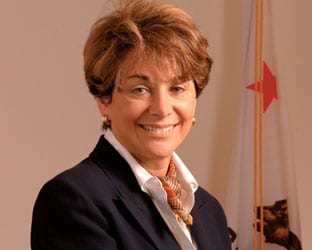WASHINGTON, D.C. — The “lame duck” Congress may historically be a period where legislators ousted from the House or Senate, along with a pending shift in party control, means bills will either get pushed through in the hopes of a quick passage or simply wither away.
For a California Representative and a Massachusetts Senator, there’s hope proposed legislation that would help sight-impaired and deaf TV viewers will get approved within the remaining weeks of the 117th Congress.
Anna G. Eshoo, who will lose her status as the senior member of the House Energy and Commerce Committee upon a shift to Republican control; and Sen. Ed Markey (D-Mass.), a member of the Commerce, Science, and Transportation Committee and author of the 21st Century Communications and Video Accessibility Act (CVAA), on Thursday came together to introduce respective versions of the Communications, Video, and Technology Accessibility Act (CVTA).
The CVTA updates and amends the CVAA “to keep pace with the proliferation of emerging technologies that have come online since Senator Markey’s 2010 bill was passed with bipartisan support.”
The legislators believe the CVTA will ensure that people with disabilities have full access to the range of mainstream communication products and services that are necessary to participate equally in professional, educational, recreational, and civic contexts, while laying a foundation for accessibility in future technologies.
“As technology has rapidly evolved over the last two decades, much of our economy and day-to-day lives have moved online,” Eshoo said. “Unfortunately, accessibility standards have stayed largely the same, leaving people with disabilities behind. In 2020, 38% of people who were blind or had low vision reported issues with at least one of the technologies needed to do their jobs, and in 2021 as many as 70% of students who are deaf or hard of hearing reported technology challenges in the educational environment. I’m proud to introduce legislation with Senator Markey to update current laws so people with disabilities have full access to modern technology that is necessary to participate equally in the 21st century.”
Markey added, “Since I authored the 21st Century Communications and Video Accessibility Act, technologies have changed. What hasn’t changed is our obligation to make sure that everyone – including people with disabilities – has equal access to the services and technologies they need to thrive. That is why I am introducing the Communications, Video, and Accessibility Technology Act, to update current laws on the books so that we can meet the technological moment and ensure opportunity, independence, and equal access for all.”
Introduction of the bill in both houses of Congress pleased FCC Chairwoman Jessica Rosenworcel. “Accessibility means equal opportunity to create, participate, and communicate—and promoting accessible technology is an important part of our agency’s mission,” Rosenworcel said. “To do so effectively we need to keep up with emerging technologies. This legislation will help us do just that, by ensuring that people with disabilities have full access to communication products and services that are necessary to participate equally in today’s world, while laying a foundation for accessibility in future technologies.”
The CVTA would:
1. Improve and expand closed captioning and audio description standards for television programming and online video streaming platforms to ensure that people with disabilities have equitable access to the wide range of programming available to the general public;
2. Update current requirements to ensure viewers can easily activate and select preferred settings for closed captions and audio description on their video programming devices, such as televisions, smart phones, laptops, and tablets;
3. Improve access to video programming for people who are deaf and use sign language;
4. Empower the FCC to ensure accessibility regulations keep pace with emerging technologies, including artificial intelligence and augmented or virtual reality platforms.
Bill text can be found HERE.




